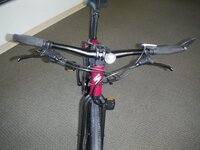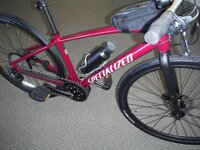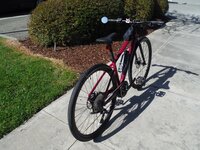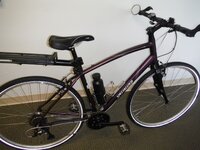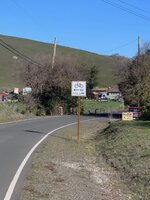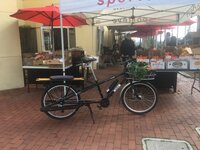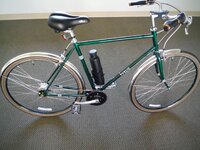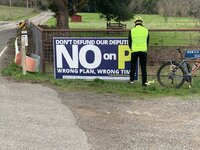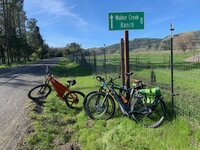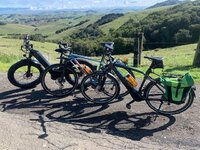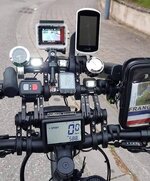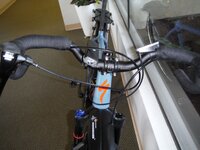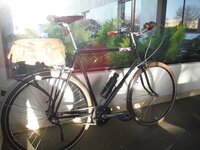Yow, PedalU-- those are some sweet builds! I bet bikes like the green one, which looks really light, really haul ass... I have no problem believing that they blow the doors off commercial products at our local LBS. See, this is why I started with a conversion, I always expected that custom builds would have some assets that commercial bikes didn't. Stunning work, man.
Katie, here's the thing-- a throttle may seem simpler, and in some ways it is-- you need more boost, just press the lever. But for a branded, integrated E-bike, my understanding is that sometimes the throttle sometimes interacts with the pedal assistance in strange ways-- and pedal assistance is nice to have, more efficient when you're cruising along and don't want to think too much. For example, I've heard that on some bikes that are Class III, 28 MPH, if you plug in the throttle, it's automatically limited to 20 MPH Class 1. On one bike I was drooling over, the reviewer for EBR (Tyson) pointed out that in level I pedal assistance, you have throttle power limited to level 1, in level 2, it's limited to level 2, and so on. So, if you're tooling along at level 2, and hoping to use the throttle to pull you through a tight turn when the bike is leaned over and you can't pedal without a pedal strike, it won't give you that much juice.
For a conversion, or DIY, or custom build, there may be trade-offs to a throttle as well, depending on your battery. Survivor (that's the name of my Trek conversion) accelerates surprisingly fast when I put the spurs to him... but after the first month or two, I realized my range was very erratic. I did some reading on batteries, and realized the bike does have an Achilles heel-- I knew it had a very small battery (to save weight, which is great!) but small batteries are more susceptible to factors like not charging to 100%, or running the battery all the way down, or being run wide open for long periods of time-- you lose range and reduce the overall lifespan of the battery. Big batteries lose range under those conditions as well, the effect is just greater with a smaller battery (or that's my understanding, and it seems to make sense.)
So imagine that I'm climbing a long hill with some steep stretches and some flat spots. I may be ripping along uphill at 24 miles per hour-- which I'm gonna miss on my new bike, which arrives tomorrow and is a Class I-- but every minute or so, I'm thinking, "Back off the battery, you're flogging it too hard," throttling down and downshifting to rest the powerplant a little. And if my ride is over 11 miles, I'm really trying to avoid the throttle and ride it like a bike when I'm on the flats, which means I'm going as fast as possible downhill to maintain momentum... and I'm have to be more careful about doing all those things later in the ride, when I feel the power beginning to dip. (I have no gauge, so that's how I know I've only got about two or three miles left.)
Also, there are now four shift levers (for the usual gears, and I have a lot of them, 7 in back, three in front) and a throttle and a light (which has five different settings, and I use most of them-- low power at dusk, strobe for sections of road where I'm hard to see at twilight, high power at full dark and so on) and a bell, which I use on blind curves, plus two brake levers.
That's NINE controls on the handlebars! What, am I flying a plane? I mounted the throttle on the left, but that shifter is stiff, so imagine I'm going uphill, holding down the throttle slightly with the heel of my left thumb while pressing the smaller lever with the end of the same finger while downshifting with my right thumb...
Now that I'm describing it, it's actually a lot of stuff to think about. And I do have arthritis in my hands, and my thumbs do hurt after a long ride!
Nothing about EBiking is quite as simple as it seems. Figuring it out and playing to a bike's assets is part of the fun.
